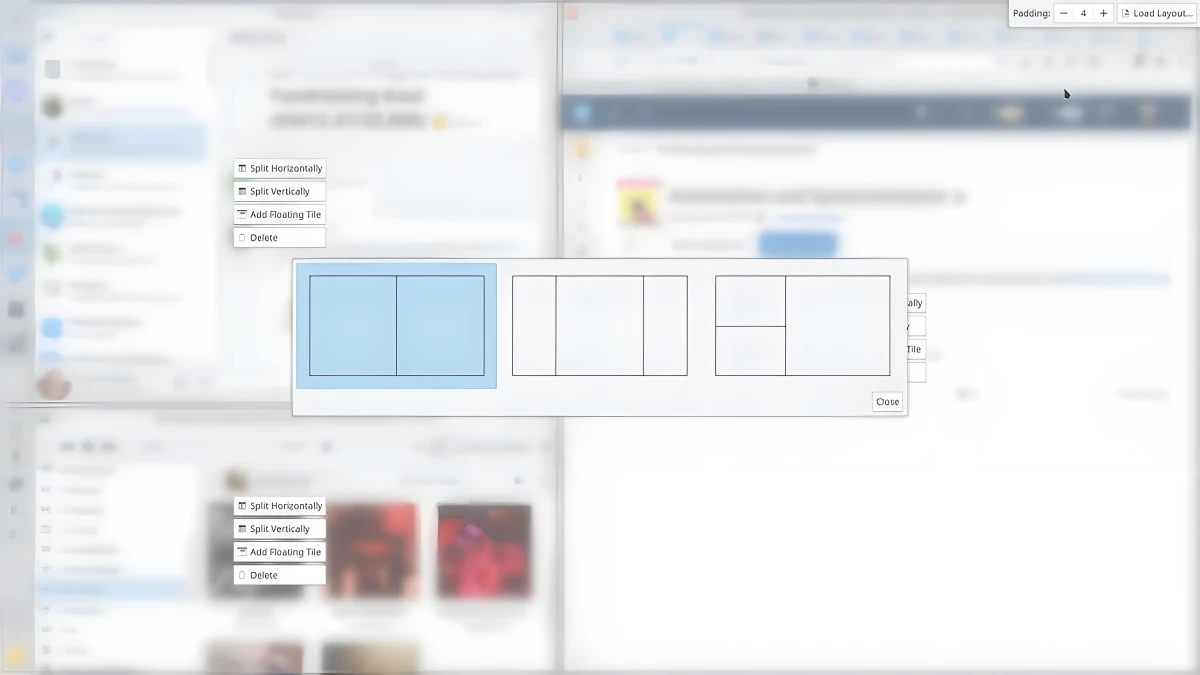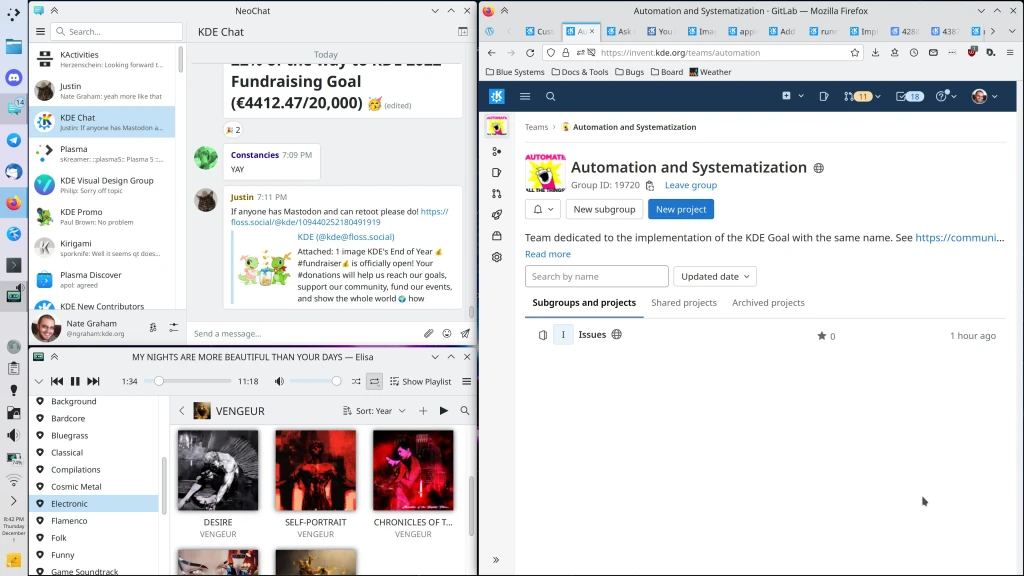
In his first article of december about news in KDE, Nate Graham, who posts everything he thinks is interesting on his blog, mentioned something that stood out above all else. They're preparing what he referred to as an "advanced stacking system," only to further clarify things and say that it's the windows that need to be stacked. Currently, in Plasma, like in GNOME and most graphical environments, windows are stacked in a very simple way: occupying half the screen or a corner of it.
All this could and will change, starting this February 14, coinciding with the release of Plasma 5.27. It is being developed, at least in its majority, by Marco Martín, and initially it is a window stacking function with a custom layout. Once active, dragging across the gaps will cause all windows sharing that gap to change in size. Graham says that it is not designed to replicate the operation of window managers (Window Manager), but ... adds a "but".
KDE will be more like Pop!_OS
Pop! _OS 20.04 It came with a novelty in its graphical environment based on GNOME. Among its highlights, something was introduced that, once activated, looks very similar to what we see in i3 or Sway: windows can be stacked as seen in the following video:
Sometimes working with something like this is much more productive: we do everything with the keyboard and we can be more efficient. Furthermore, in the window managers There is no real desktop, so the consumption of resources is lower. If System76 or KDE evolve their proposals to use a 100% WM, it is something that we will only know over time. At the moment, the only thing confirmed is that KDE is working on that "advanced stacking system", but it is not known how far they will go.
Looking at the header capture, it reminds a little of the Windows 11 Snap Layouts feature. The latest version of Microsoft's operating system also has a window stacking option, accessed by right-clicking on the maximize/restore window button. At that moment we will see drawings on how we want to organize them, and after positioning the first one, in the rest of the holes we will see all the open applications to put them where it suits us best.
Once in position, we can click and drag on the gaps in the windows to resize two of them, something we can also do in Plasma 5.27.
"But we expect it to grow and advance over time"
This feature is still in its infancy and is not designed to fully replicate the workflow of a window manager. But we expect it to grow and advance over time, and also the new APIs added for it should benefit third party tile scripts that want to let you turn KWin into a window manager. Many thanks to Marco Martin for contributing to this work, which will be released in Plasma 5.27.
The function has just been presented and is taking its first steps. Although Graham says that it is not designed to replicate the behavior of window managers, also says that he expects it to grow and advance over time, so in the future we might have something similar to what Pop!_OS offers or even more.
Right now, it is understood that what we will have will be, as they themselves say, an advanced stacking system, which will be one (or several) twists to what is currently only positioned on the screen. Something with which we can work on split screen without having to resize two or more windows manually so that they fill the entire surface of the screen. The "but", without saying anything, is most interesting.
We will have the first contact in February, and from here I encourage Marco Martín and the entire KDE team to go ahead with this.
